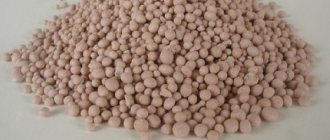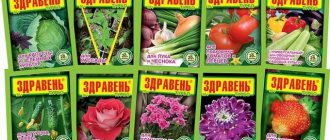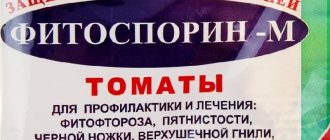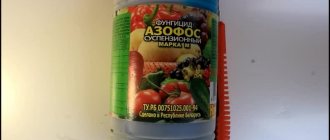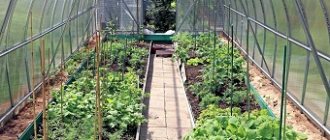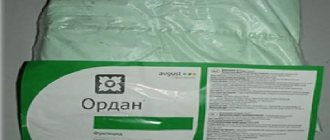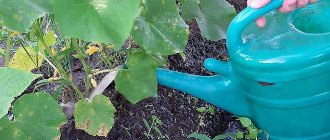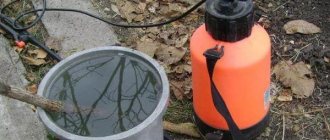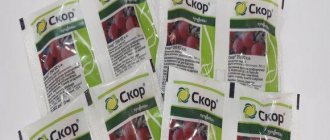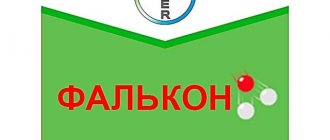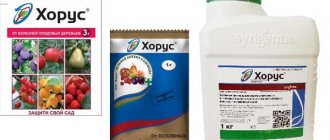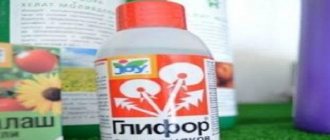Humus is the main component of the soil, which is responsible for its fertility. Humates are directly involved in biochemical processes. To improve soil fertility and quality, the industry has developed an organic type of fertilizer - potassium humanate.
The series includes potassium, which is filled with important microelements, thanks to which fruit and other agricultural crops are saturated with beneficial properties. This tool has found its use among many owners of various land crops, ranging from simple lovers of indoor plants to professional farmers.
Description, composition and mechanism of action of potassium humate
On sale you can find a variety of products called Potassium Humate. This does not mean that only one among the others is natural, and the rest are fake.
Differences in form and composition depend on the method of manufacturing the fertilizer: natural or artificial ingredients.
All types of humate (with microelements or dry, in tablet form) are substances with humic acids (over 81%).
The percentage of the remainder consists of amino acids, peptites, antibiotics and stimulants, enzymes. The ratio of additional substances differs between different manufacturers and release forms.
The mechanism of action is also not very different: stimulation of metabolic and biochemical processes. Obtaining fertilizer from coal and peat. In some cases from silt and certain types of soil.
The appearance of the fertilizer depends on the form:
- liquid - a natural substance obtained by processing peat;
- powder form - an artificially created drug;
- potassium humate with microelements: the second name is “Prompter”. It is a universal remedy. It is more used as a top dressing, which can be used every 2 weeks throughout the growing season. Then the application of humate Prompter is reduced to 1 time every 1.5 months. Obtained from bottom sediments of fresh water reservoirs (sapropel).
Interesting fact! Powdered fertilizer potassium humate can easily replace humus. If we carry out the ratios, we obtain the following data: 1 kg of humate will be equal to 1 ton of humus. At the same time, fertilizer in any form will help remove nitrates and toxic chemicals from the fruit.
What are humates?
Humates are natural elements formed in the soil during the breakdown of plant fiber. They are also known as humic acids. These elements are classified as salts, which are based on sodium or potassium. For garden crops, humates replace fertilizers.
Humic acids are formed when they break down:
- peat;
- brown coal;
- sapropel;
- leonardite.
Among the listed elements, coal contains the smallest amount of humates. The volume of humic acids from the total composition of solid fuel is 5%. The easiest way to obtain humates is from leonardite. This component contains from 40% to 80% humic acids.
When humates get into the soil:
- stimulate the work of microorganisms;
- improve soil structure;
- promote the penetration of water and oxygen into the ground.
This improves the quality of the soil, which enhances plant development and increases productivity. Humates do not contain substances that are hazardous to the environment, which means they can be used in any conditions.
Differences from sodium humate
There is not only potassium humate, but also sodium humate. Two different substances that are obtained by treating humic acids with alkali. Treatment of plants with these fertilizers is identical. The question then becomes what is the difference between the two.
The differences are in the receipt of batteries. If you feed with potassium humate, the crop will receive potassium. The element is necessary for the full development and ripening of fruits. The fertilizer is a potassium fertilizer.
Sodium humate is used when there is an excess of potassium. Top dressing has negative and positive qualities (immunomodulator, stimulator of maturation and growth). In addition to its beneficial effect on soil and plants, sodium prevents the supply and nutrition of potassium to crops. It also helps increase toxins.
Since the substance is cheaper than potassium humate, gardeners quite often buy it. Considering the pros and cons of the two fertilizers, before purchasing, you should think about the resulting harvest and the taste qualities of the fruit.
Types of fertilizer
Potassium humate is one of the universal fertilizers. At the same time, it is effective and economical to use. When compared with other popular organics (manure, humus), in addition to the positive effect on soil and plants, the following points are highlighted:
- environmentally friendly product;
- convenient for storage;
- quickly affects the culture;
- there is no need to wait until ready, as is the case with humus;
- does not have a sharp unpleasant odor.
Before feeding plants, it is worth deciding on the form of fertilizer. But the choice is made by the farmer himself. They take into account the degree of need, timing, how convenient the method of application is, goals, and expected results.
Liquid
Since the substance is obtained from peat, the color is dark brown. This form is the most popular. It is famous for its high efficiency and rapid action on seeds and seedlings. Potassium humate is a concentrated liquid that is diluted in cold water before use.
Bottles containing the substance contain instructions for dilution. Also, this form, unlike others, can be used together or sequentially with nitrogen-containing and organic fertilizers
Powder
It is more characterized by farmers as an immunomodulator. After treatment with dry potassium humate, the plant grows faster and bears fruit.
Positive changes occur in the soil (humus formation, acceleration of microflora restoration). Subject to breeding. The recipe and proportions for preparation are indicated on the packaging of the powder.
Types of humates
Let's look at what humic fertilizers are and what types they come in. Depending on the raw materials (its quality and characteristics) that were used for the production of humates, they are divided into types. There are two main types of humates - sodium and potassium humate.
Considering that sodium and potassium humates are natural fertilizers, they have a beneficial effect on:
- physical properties of the soil;
- mechanical structure of the soil;
- chemical and hydrological structure of the soil;
- biological characteristics of the soil;
- protective properties of the soil.
organic organo-mineral fertilizers they contribute to:
- growing environmentally friendly agricultural products;
- reducing the content of biotoxins, radionuclides and heavy metals in products;
- increasing the content of vitamins, proteins and carbohydrates;
- improving the presentation of grown products.
Also, the use of humates in gardening and gardening contributes to:
- reducing the cost of using nitrogen fertilizers by up to 50%;
- increasing the effectiveness of herbicides, fungicides and insecticides up to 30%;
- improving the quality of the crop and thereby increasing the selling price within production limits.
Sodium humate
Let's take a closer look at what sodium humate is. This species is a growth stimulant to increase shoot growth and reduce leaf fall; increase resistance to factors that are stressful for the plant during the growing season: cold, wet and dry years.
This growth stimulator is non-toxic, has no cumulative properties, and has immunostimulating and adaptogenic properties.
Potassium humate
Let's look at what potassium humate is and what types of this fertilizer there are.
The following types of potassium humate exist:
- Peat liquid humate
- Peat powder humate
- Gumate "Prompter"
The most popular nitrogen fertilizers are ammonium nitrate and urea (urea).
It is produced by extracting active substances such as nitrogen, potassium, phosphorus and other trace elements during peat processing. The popularity of this type is due to its ease of use and effectiveness.
Powdered peat humate must be diluted with water; it is also a popular type of humate.
Humate "Prompter" is known as a universal fertilizer. This type of potassium fertilizer is used to feed indoor plants and garden crops.
Areas of use
Potassium humate is a universal organic product for application to plants. With its help, a gardener can begin working with soil and planting material.
During the growing season, feed the crop until harvest. Before winter, it is also added so that the soil replenishes the lost supply of useful microelements.
You can use humate:
- during preparatory work with seeds and seedlings. Application takes place in liquid form, i.e., soaking is carried out;
- as a top dressing;
- after transplanting seedlings for better adaptation and rooting;
- for treating plants in open and closed ground at all stages of growth;
- for spraying during the flowering period. But the concentration of the solution should be low (maximum 0.1%);
- to improve the quality of organic nitrogen-containing fertilizers and soil reclamation.
The method of preparation and dilution of the working solution is indicated on the packaging. Step-by-step instructions will help prevent possible side effects.
Pre-sowing preparation
Potassium humate is often used as an immunomodulator. To do this, the seed material is soaked before planting in the ground.
The procedure contributes to a percentage increase in the germination of seeds, bulbs, and grains. Use a liquid diluted concentrate. Soaking time from 8 hours to 24 hours.
Growing seedlings
To improve immunity, potassium humate is applied to seedlings. The fertilizer does not lose its properties, the effect manifests itself throughout the growing season.
When applied to seedlings, we get the following result:
- increased resistance to infections and fungi;
- pest resistance;
- increased survival after transplantation into open ground;
- stable condition under negative environmental influences.
As a fertilizer
You don’t have to wait until the seedlings are planted to start feeding them. Incorporating fertilizer into the soil for the winter or early spring will help perennial crops “wake up” and annual crops to take root faster. Dry humate is chosen as a “saving drug”.
For convenience, the powder is mixed with sifted river sand. Absorption into the middle and lower layers occurs during snow melting. If the winter has little snow, they dig.
Types of drugs: composition and characteristics
The list of the most effective and popular fertilizers based on potassium humate is discussed in more detail below.
Universal
Universal potassium humate has a beneficial effect on plant growth, reduces soil acidity and accelerates metabolic processes. The fertilizer has the following composition:
- a large number of humic compounds;
- substances that are growth stimulants, peptides;
- wax, fat, antibiotics;
- essential amino acids and enzymes.
Potassium ensures the normal process of photosynthesis, sugar formation and the entry of carbohydrates into the plant. Mineral fertilizer can be used to treat seeds, cuttings, and adult crops when using a certain concentration of the product.
Fertilizer must be applied directly to organic compounds, since when planted in black soil, the solution will not have the desired effect.
Liquid peat
Liquid peat humate has a considerable number of positive reviews regarding the degree of effectiveness of the product. Dark brown liquid with a high content of active compounds (up to 80%) and natural peat.
The composition also contains essential minerals and organic substances. The fertilizer is easy to use and quickly gives the desired effect:
- Fertilization of plant crops is carried out with a solution with a concentration of no higher than 0.01% (soaking seeds, planting, fertilizing, spraying on the top part);
- improvement of the general condition of the soil with a solution of 0.2%;
- the drug can be used in combination with pesticides, nitrogen fertilizers, and organic compounds; the exception is phosphorus compounds, since when mixed with potassium they form insoluble substances;
- the use of fertilizer in an integrated crop care scheme ensures an increase in yield and helps reduce the use of various nitrates and toxins.
Peat powder
Peat humate powder dissolves well in water and forms a suspension of useful minerals. Advantages when using:
- increasing germination and further growth of planting material;
- stimulation of the root system;
- strengthening immune functions;
- increase in fruiting time;
- shortening the ripening period and reducing the content of nitrous acids in the soil.
Expert opinion
Stanislav Pavlovich
Gardener with 17 years of experience and our expert
Ask a Question
When applying fertilizer, the quality of humus increases, which improves biological activity and increases the yield of cultivated crops.
The drug "Reichard"
A fertilizer mixture with a balanced composition that increases soil fertility and allows you to grow environmentally friendly crop products. Scope of application (processing, fertilizing of grain, industrial, fruit and berry, garden and greenhouse crops in open and closed ground).
Advantages when using:
- improving the process of nutrient absorption;
- natural soil fertility and increased growth;
- increased resistance to various diseases and pests;
- increasing productivity.
Fertilizer mixture “Prompter”
The popular mineral fertilizer mixture “Prompter” contains a complex of useful substances and compounds that provide a certain effect on soil improvement:
- increasing immunity;
- accelerating the process of growing seeds and ripening fruits;
- rapid adaptation of the plant when weather conditions change;
- affordable price (in the range of 90 rubles);
- restoration of severely depleted soil.
See also Features of using Fitosporin for cucumbers
Potassium humate with trace elements
A concentrated fertilizer solution that can increase soil fertility by 40% and yield by 30%. The consumption rate is 0.4 liters per 1 hectare of land. The main components of the composition (humic compounds, lignin, pigments, amino acids, biologically active substances) ensure the biological activity of the soil.
Pros of use:
- improvement of physical, chemical, biological properties of soil;
- increasing productivity and soil fertility;
- plant resistance to adverse environmental factors (diseases, pests, harsh weather conditions);
- reducing costs in farming as an alternative to using potassium humate as a cheaper and more effective means.
"Energen"
A natural growth stimulator in the form of polydisperse granules that dissolve well in water. Composition of the drug:
- humic, fulvic, silicic acids;
- complex of mineral compounds.
Application area:
- spraying, soaking seeds, seedlings, seedlings, tubers;
- treatment of plants outside the root;
- watering and spraying crops;
- joint use with pesticides, water-soluble fertilizer mixtures.
“Prompter” from “Oktyabrina Aprelevna”
“Prompter” from “Oktyabrina Aprelevna” is a mineral fertilizer that is intended for garden flowers and contains a complex of humic compounds and other useful microelements.
Advantages when using:
- eliminating yellowness of leaves;
- increasing resistance to various diseases and pests;
- increasing the number of flowering buds.
Expert opinion
Stanislav Pavlovich
Gardener with 17 years of experience and our expert
Ask a Question
When fertilizer is applied, garden crops tolerate the winter well. Area of application (soaking, planting seeds, spraying, watering flowers during their growing season, combined use with other fertilizers).
"Humate + 7 iodine"
The composition “Humate +7 iodine” has an improved composition with a maximum content of humic compounds (up to 85%) and the necessary mineral additives (manganese, molybdenum, zinc, boron, nitrogen, iodine, iron).
Release form – dry granules intended for dissolution in water and used for treating the upper part of plants during the growing season. The proportion for preparing the solution is 100 grams of the substance per 10 liters of water.
Advantages and disadvantages
Definitely, the benefits of potassium humate cannot be exaggerated. The product has a stimulating effect for all types of garden crops. Its task is to have a beneficial effect on the roots of the plant, to force it to actively develop and strengthen.
Positive traits:
- suitable for all cultures;
- helps increase resistance to diseases, infections, pests;
- imparts frost resistance, increases the shelf life of the crop;
- reduces the need for nitrates in fruits;
- increased germination, accelerated fruiting time;
- ripening in general accelerates to 10-14 days;
- soil characteristics improve. There is an accelerated recovery of microelements;
- environmentally friendly fertilizer product.
There are only two negative aspects of the application. The first is that it cannot be applied if there is enough potassium in the soil. An excess of an element impairs the development of culture.
Secondly, strict adherence to dosages is required. Not a single organic product in concentrated form can have a beneficial effect on the earth and the plant.
Advantages
- increases plant resistance to fungal and bacterial diseases
- increases germination energy and seed germination
- mobilizes and enhances the plant’s immune system
- stimulates the growth and development of a powerful plant root system
- provides micronutrient nutrition
- increases the fruiting period
- reduces ripening time
- increases productivity
- increases resistance to adverse environmental conditions
How to prepare a working mixture
In 90% of cases, it is recommended to dilute potassium humate before use. A concentrated liquid product does harm instead of benefit. Instructions from the manufacturer provide for different dosages for dilution.
Depends on the type of crop, the need for the element, the condition of the soil, and the stage of development. If the solution is needed for soaking seeds, then stirring 0.5 g in a liter of water is enough. Processing times vary from 8 to 48 hours.
Watering/spraying also takes place according to different schemes. To apply under the root, the ratio of substances is 1 tbsp. l. to 10 liters (potassium humate is stirred in water). Spraying: a less concentrated solution is required (3 g of fertilizer per 10-liter bucket).
Liquid organic fertilizer is often recommended for treating fruits after spraying with pesticides. This is how detoxification is carried out. Ratio: 50 g powder + 50 g sand. The consumption of the received funds is 10 square meters. m.
Need to know! In addition to powder, tablets and concentrate, you can buy potassium humate in the form of a gel/paste. The drug is more expensive than others, but more effective. The composition contains the most active molecules, which ensures an increase in the percentage of penetration.
What to buy
Experienced farmers begin to use humates and any other preparations only after preliminary testing. They treat control beds, for example, with potassium humate from different manufacturers and in different dosages. To do this, by the way, you need instructions from the manufacturer for a specific crop. Based on the harvest results, the farmer evaluates the effectiveness, costs and makes a choice in favor of a specific drug. At the same time, the optimal dosage is determined. Neither a colorful description of unique properties, nor a convincing promise of bumper harvests, nor an offer to receive a huge discount will work on an experienced farmer. Only facts verified in our own field! It is very difficult for a summer resident to test the effect of even one drug on 6 acres. But there is an easy way out. It is better to choose those fertilizers that farmers actively use. But solutions of humates from manufacturers specializing only in summer residents and producing products exclusively in small containers are best used only after carefully studying all possible information, and then carefully.
Instructions for use of the prepared solution
Potassium humate, regardless of purpose, must be diluted according to the manufacturer's instructions. Recommendations apply separately to crops and species.
For cereals
The farmer himself must choose the method of application for grain crops. A liquid concentrate is recommended for processing seed material and spraying. For effective use, it is suggested to dilute 200 ml of potassium humate in 10 liters of water.
Application depends on the growing season:
- first leaves, flowering - corn;
- budding, then after 2-3 weeks repeat the procedure - buckwheat;
- tillering, first inflorescences – sorghum, millet, oats, barley, rye, wheat
For vegetables
In this case, fertilizing (foliar, under the root) should take into account the type of crop:
- for cucumbers and tomatoes, the solution is standard (dilute 100 ml of potassium humate in 10 liters of water). Number of applications/treatments – up to 4 times;
- leafy for all vegetables (including tomatoes) 50 ml per 10 l. Consumption depends on the age of the seedling (per 1 sq. m. from 3 to 10 l);
- carrots, zucchini, cabbage and beets are treated 4 times per season with a standard solution.
Fertilizer compatibility
At the beginning of the season, the farmer creates his own calendar of treatments and field work with plants. At the same time, treatments with fertilizers, fungicides and other means are taken into account. If you decide to use potassium humate during the growing season, it means:
- Do not treat the soil together with phosphorus-containing preparations or potassium nitrate. The gap between applications can be at least a week.
- Perennial crops are processed several times per season. But annual plants - only before budding.
The dosage is not above all
Humic preparations are often sold in the form of universal fertilizers with organic microelements. An excellent option for feeding home flowers and... and nothing more. Humates have been used as fertilizers for a very long time. But we cannot ignore the experience, including that of foreign colleagues. This refers to the use of humate as an antistress agent and growth stimulant. If humate is applied at the right time, it gives a much better effect than the most careful dosage. No, we do not suggest neglecting the dosage. You need to try to reach the optimal total amount of the drug for the season. But this is not the main thing. Treatments with humate solutions help relieve stress from plants after treating fields with herbicides, pesticides, and fungicides. Stress causes a delay in development and growth. We add a certain amount of Normat L or Lignohumate to the tank mixture and, voila, the plant easily overcomes the effects of stress.
Let's focus on Normat L. The drug helps increase drought and frost resistance, accelerates growth, relieves stress... But it must be used at the right time, for example, before drought, and not after the plants have withered. Although a solution of humic substances is a universal preparation, its use to achieve clearly defined goals as part of specialized preparations gives the best effect. We all know that the disadvantage of almost all universal fertilizers is their low efficiency compared to specialized ones. And humic substances are no exception.
Specialization
No matter how good, for example, peat potassium humate is, if the manufacturer suggests using it only as a universal organic fertilizer, then following his advice, you will never get the maximum effect. Feeding with a humate solution in itself is undoubtedly useful. But farmers are increasingly using humate together with fertilizers, protective agents, and phytohormones. This is due to the mutual enhancement of the effectiveness of the components of the working solution. That is, their efficiencies are not simply added up arithmetically, but are multiplied to some extent. And don't forget about microelements! It is for this reason that specialized new generation preparations were created: Normat S, Normat L, Argolan (they are used only for foliar treatment). Abroad, Lignohumate is also used not only directly for processing fields, but also as a component of new generation drugs. The instructions for them recommend feeding not according to a schedule, but as needed. But there is one very important point. When it comes to normalizing the composition and microflora of the soil, what is needed is humic preparations without impurities (peat, coal, sapropel, Lignohumate - it is the price/quality ratio that is important here), possibly with microelements. And the method of treatment in this case is watering, not spraying. They simultaneously help cleanse the soil, but this is more of a side effect. Since targeted work in this direction is still being carried out only sporadically, and there is no clear proven methodology.
Analogues of potassium humate
It is not necessary to purchase potassium humate. You can always use similar products that contain mineral supplements. “Humate + 7 iodine” has proven itself well. Also offer:
- Gibbersib is a phytohormonal substance;
- Hyteroauxin – growth activator;
- Athlete – growth regulator;
- Gumifield is a stimulant.
Each drug has beneficial properties and special rules for use. Before starting work, be sure to study the instructions for use, dosage and expiration dates.
